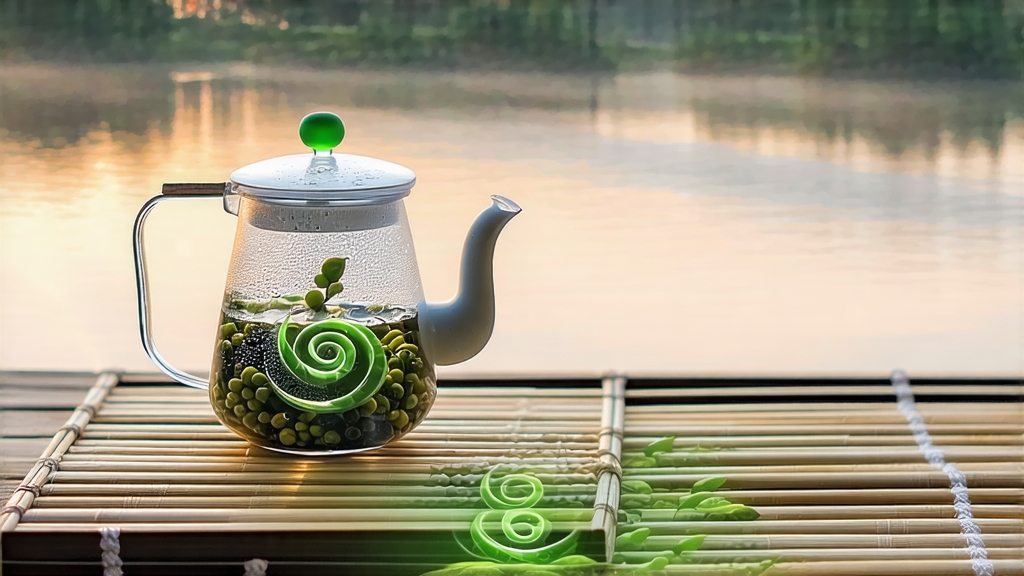
Among the more than one thousand named green teas that China has gifted to the world, few carry as much romance compressed into a single curl as Biluochun. Literally “Green Snail Spring,” the name itself is a miniature poem: the leaf is the color of jade, the shape of a spiral shell, and the picking season is the brief heartbeat between Qingming and Grain Rain when Jiangsu’s East Dongting Mountain wakes from winter dormancy. Foreign drinkers often meet it first by aroma—an almost disarming perfume of white peach, lilac and fresh lychee—then by the spectacle of thousands of tiny downy coils dancing upright in a tall glass. Yet behind the fragrance and the choreography lies ten centuries of imperial favor, maritime trade, horticultural accident and meticulous craft. This essay invites the global tea lover to look beyond the cup and enter the mist-laden orchards, charcoal-heated woks and sensory lexicon that define true Biluochun.
-
Historical vignette: from scare to state tribute
Song dynasty mountain chronicles already mention “Xia Sha Ren Xiang” (Startling Fragrance), a wild tea growing among peach, plum and loquat trees on Dongting’s rocky islets. Local legend blames the name on a tea-picking girl whose basket of buds was so aromatic that a startled monk cried out. By late Ming the Kangxi Emperor, touring the lower Yangtze incognito, sampled the tea on a boat anchored at Lake Tai. Delighted by the “spring within a snail,” he renamed it Biluochun and decreed annual tribute of 16 jin (about 8 kg). The imperial seal turned a mountain cottage industry into a regulated craft; within decades Suzhou merchants were exporting it to the Dutch East India Company through Shanghai’s newly opened port. Thus the same leaf once carried in a girl’s bamboo basket crossed oceans in lead-lined chests, scenting the holds of clipper ships bound for Amsterdam and London. -
Terroir: lake, mist and fruit trees
Authentic Biluochun comes only from the East and West Dongting Mountains, two granite islands rising from Lake Taihu, China’s third-largest freshwater lake. The water body moderates temperature, creating nightly mists that act like a slow-release moisturizer for the tea bushes. Day-night differentials of 8–10 °C slow amino-acid metabolism, concentrating L-theanine and fragrant volatiles. Most unusually, farmers inter-plant tea with fruit trees—peach, apricot, plum, loquat and even bayberry—so the camellia shrubs absorb floral terpenes drifting on the breeze. Researchers at Nanjing Agricultural University identified 32 aromatic compounds shared by Biluochun leaves and neighboring peach blossoms, lending credence to the idea that the tea “breathes” its orchard neighbors. -
Cultivar matrix: two lineages and one outlaw
The legally protected cultivars are Dongting Small-Leaf群体种 and its clonal selection Zaochun. Small-Leaf is bushy, frost-tolerant and naturally low in tannin, yielding the classic sweet-thin liquor. Zaochun germinates five to seven days earlier, stretching the harvest window but risking spring frost. A third cultivar, Fuding Dabaicha, migrated from Fujian in the 1980s; it fetches lower prices because its fatter buds lack the signature spiral, yet some farmers prize its high yield. Purists dismiss it as “fake snail,” but economic pressures ensure it still appears in mid-tier markets. -
Picking calendar: the hour that costs a day
The harvest lasts barely twenty days, opening around March 20 and closing before April 15. Only the bud plus the immediate unfolding leaf (yi ya yi ye) qualify for top grade. Experienced pickers work at dawn when leaf temperature is below 12 °C, minimizing oxidation enzymes. A skilled woman can pluck 600 g of fresh leaf in a morning—enough, once finished, for 120 g of dry tea. Because the downy buds bruise at the slightest pressure, baskets are lined with nettle cloth and never loaded above 3 cm depth. In short, the most expensive hour of Suzhou labor is spent crouching under peach blossoms, tweezing off tips that look almost identical to the insects beside them. -
Craft: the seven-hour withering dance
Within two hours of